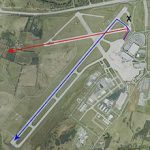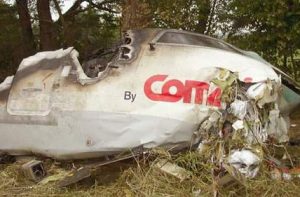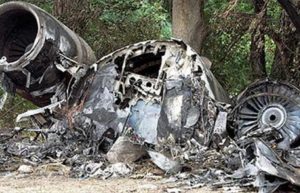
 Following instructions and paying close attention to those instructions are crucial to the safe operation of a plane, especially at take offs and landings. When the pilot of Comair Flight 5191 taxied to the runway of his takeoff, something went horribly wrong. He was told to proceed to Runway 22, but he turned one lane too early, and ended up taking off on Runway 26, which was too short for a safe take off of a plane of that size. Comair 1591, was a CRJ-100ER plane that was carrying 47 passengers and 3 crew members. Instead of using runway 22 as expected, they used runway 26 which had too short of a path for a safe takeoff, even though Captain Jeffrey Clay confirmed using runway 22. He inadvertently took a left too early according to the map. At Blue Grass Airport in Lexington, Kentucky, on August 27, 2006, 49 of the 50 passengers and crew died while taking off from the airport. It’s hard to say at what point the pilot knew he was in trouble, but as the plane reached the end of the runway, they knew that there had not been enough time to gt the plane up to speed,and they simply couldn’t get enough lift to get it safely in the air. “They must have almost cleared the fence because only the top of it was missing and then the tips of some trees further out were also burnt off,” said Nick Bentley, who owns the 115-acre farm where the plane crashed, referring to an 8-foot metal fence that separates his property from the airport’s 3,500-foot runway.
Following instructions and paying close attention to those instructions are crucial to the safe operation of a plane, especially at take offs and landings. When the pilot of Comair Flight 5191 taxied to the runway of his takeoff, something went horribly wrong. He was told to proceed to Runway 22, but he turned one lane too early, and ended up taking off on Runway 26, which was too short for a safe take off of a plane of that size. Comair 1591, was a CRJ-100ER plane that was carrying 47 passengers and 3 crew members. Instead of using runway 22 as expected, they used runway 26 which had too short of a path for a safe takeoff, even though Captain Jeffrey Clay confirmed using runway 22. He inadvertently took a left too early according to the map. At Blue Grass Airport in Lexington, Kentucky, on August 27, 2006, 49 of the 50 passengers and crew died while taking off from the airport. It’s hard to say at what point the pilot knew he was in trouble, but as the plane reached the end of the runway, they knew that there had not been enough time to gt the plane up to speed,and they simply couldn’t get enough lift to get it safely in the air. “They must have almost cleared the fence because only the top of it was missing and then the tips of some trees further out were also burnt off,” said Nick Bentley, who owns the 115-acre farm where the plane crashed, referring to an 8-foot metal fence that separates his property from the airport’s 3,500-foot runway.
Shortly after 6am, Comair flight 1591 crashed in a field just half a mile from the Blue Grass Airport in an area of Kentucky known for its horse farms and the Keeneland Race Course. The plane was traveling from Lexington to Atlanta, when it went down. Peggy Young, who lives on Rice Road, near the area where the plane came down, said that just after 6am she and her husband Michael were awakened by the sound of the crash. “There was a loud explosion,” she said in a telephone interview. “We thought it was just a storm, but then we thought it was too loud to be a storm because it had just barely rained. We just were sleeping in when the phone rang and it was Keeneland security and they told my husband there had been an airplane crash.”
First Officer James Polehinke was the only survivor of the crash. He suffered broken bones, a collapsed lung, 
 and severe bleeding. In the end, the ultimate blame was put on the captain, because he didn’t abort liftoff despite questioning his surroundings. Nevertheless, the airport was found to be using outdated maps and had needed to improve runway markings and conditions.So in reality there was blame to go around, and because of the errors, 49 people lost their lives that day in August, twelve years ago. “The whole airport shut down from Aug. 18 to 20,” said Brian Ellestad, the director of marketing and community relations.
and severe bleeding. In the end, the ultimate blame was put on the captain, because he didn’t abort liftoff despite questioning his surroundings. Nevertheless, the airport was found to be using outdated maps and had needed to improve runway markings and conditions.So in reality there was blame to go around, and because of the errors, 49 people lost their lives that day in August, twelve years ago. “The whole airport shut down from Aug. 18 to 20,” said Brian Ellestad, the director of marketing and community relations.


Leave a Reply